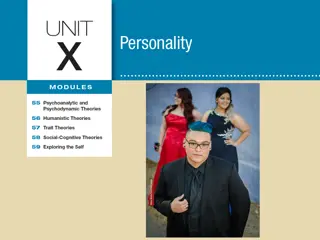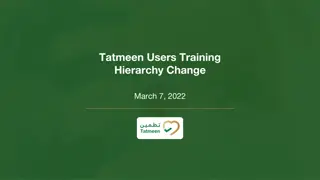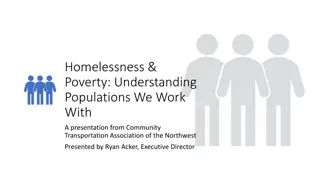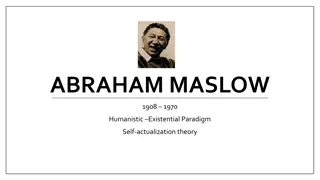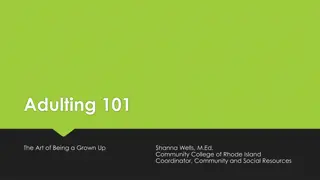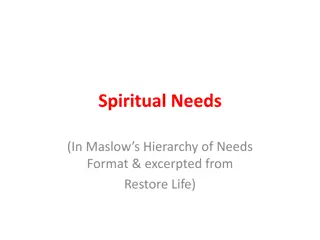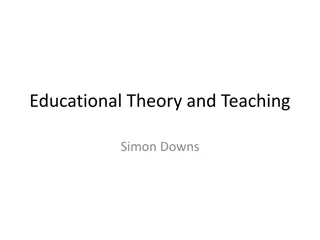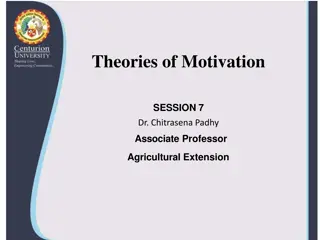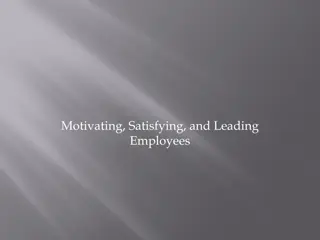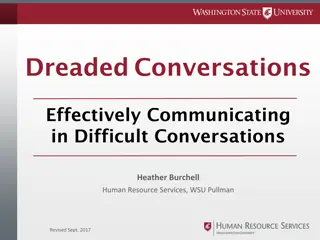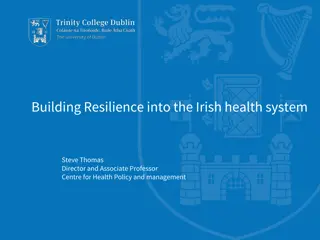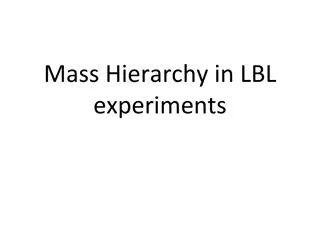Understanding Resilience Through Maslow's Hierarchy of Needs
Exploring the concept of resilience through Abraham Maslow's Hierarchy of Needs, which outlines the progression of human needs from basic physiological requirements to self-actualization and intrinsic values. Recognizing the importance of interpersonal relationships in fostering resilience, especially in challenging times like the COVID-19 pandemic, where key themes for frontline staff well-being include teamwork, rest, uncertainty, and moral injury.
Download Presentation

Please find below an Image/Link to download the presentation.
The content on the website is provided AS IS for your information and personal use only. It may not be sold, licensed, or shared on other websites without obtaining consent from the author. Download presentation by click this link. If you encounter any issues during the download, it is possible that the publisher has removed the file from their server.
E N D
Presentation Transcript
Nurturing Resilience 15thApril 2021 Dialogue Sabina Rosdarklin
Maslows Hierarchy of Needs
Hierarchy of Needs Abraham Maslow (1908 1970), former President of the American Psychological Association, developed work on human motivation and in 1943 published a paper on a human hierarchy of needs, which that became a touchstone for thinking about human motivation.
Basic Needs Initially five basic needs were defined, which he considered to be hard-wired in humans. He arranged them hierarchically, a pyramid, at base physiological needs, safety and security, love and belonging, esteem and then top of the pyramid self- actualization: people s desire for self-fulfillment, namely, the tendency for them to become actualized in what they are potentially. This tendency might be phrased as the desire to become more and more what one idiosyncratically is, to become everything that one is capable of becoming (Maslow, 1943)
The Need to Value Maslow grappled with another need that he eventually included as beyond and above self actualizing, that of holding intrinsic values, values that transcend the individual s personal self-interests. At first, he considered these motivations spiritual and additional to his hierarchy of biologically rooted motivational needs. He thought that only some people were motivated at the level of value that transcends the person, so they could not be basic universal needs and he called them metaneeds Later he came to view basic needs and metaneeds as being in the same realm of discourse they are all biologically desirable, and all foster biological success You may notice that in much recent literature on what leads to happiness holding a transpersonal set of values is usually included.
Brief report, Only Human, Frontline Staff Wellbeing during Covid19 (July 2020) The key themes emerged as most relevant to frontline staff were: Teamworking and peer support; Rest and break-taking; Uncertainty; Moral Injury
Interpersonal Nature of Resilience I am repeating here that the OH researchers, in response to their findings, designed a campaign centred on strengthening and empowering bonds between colleagues, understanding that resilience lies not just in individuals but between them. They emphasized that taking actionable steps to care for their colleagues, including checking in, encouraging effective breaks and dealing with uncertainty, help create and sustain a resilient team culture.
Enabling effective conversations about holistic wellbeing The researchers raised questions of how to enable effective conversations about wellness within often changing teams. Their questions included: How do we help individuals detect early signs of stress or exhaustion in themselves or colleagues? How might we encourage staff to switch off and recharge when they are not at work? How might we support staff experiencing distress associated with working beyond their capabilities or making difficult decisions regarding people in their care? (process feelings of moral injury) How might we help staff experiencing uncertainty to feel more in control? (managing uncertainty)
Confluences? The needs and strategies recommended to assist holistic wellbeing (OH report) may bring Maslow s hierarchy of needs to mind, from those basic physiological needs to the top level of intrinsic values. Just listening at a supportive peer level can mitigate the difficulties of living with uncertainties and the wounds of having to sometimes work in a manner that generates moral injury, an affront to our esteem, actualization and intrinsic values. Resilience coaching sometimes aims to guide people to develop components of well-being that promotes resilience by:
Caring for physical wellbeing Maintaining a relationship with a support system Undertaking reflection and recovery Resilience may be aided by: Acceptance of the moment Commitment to action Being flexible Cherishing purpose and hope
In time of Covid19 When we are in an adverse situation, our needs are impacted upon across the range. The basic vital needs of physiological provision, of safety and of experiencing connections of love and belonging are what we need to draw attention to most of all. This focus underlies many of the recommendations we have looked at already, of physical rest and care, of mindfulness, of a quality of just listening for promoting wellbeing, nurturing resilience and as a response to trauma. From this base we build for one another the conditions in which our self-esteem, our potential and our personal and collective values can be developed and maintained.
















